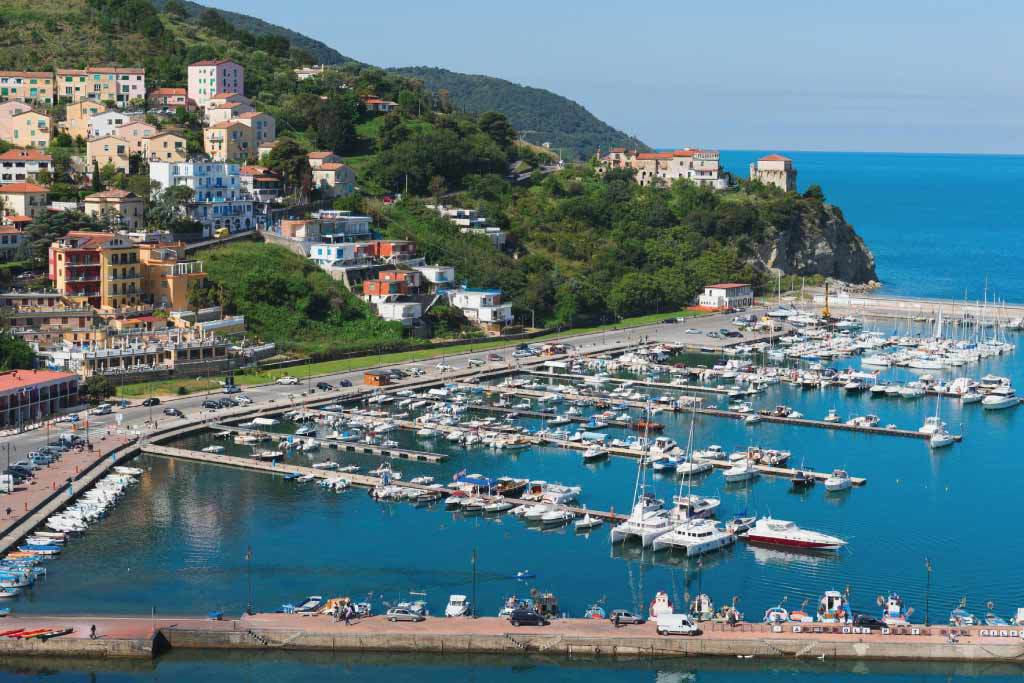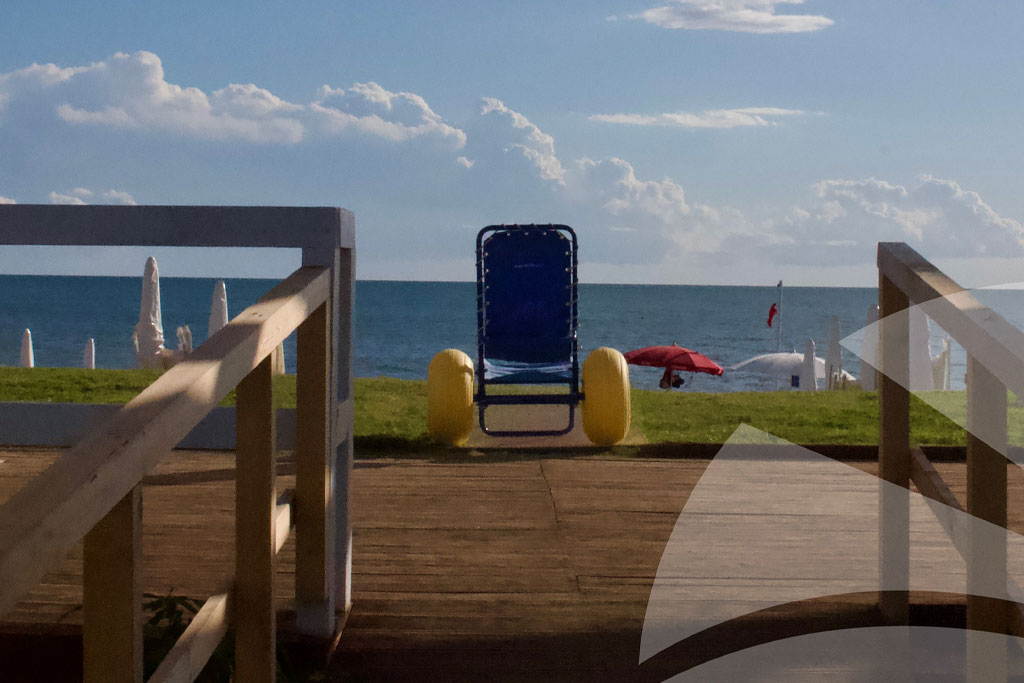In the heart of the Cilento, Vallo di Diano and Alburni National Park, splendidly overlooking the Tyrrhenian Sea, stands the ancient medieval city of Agropoli (ancient name Acropolis as “city set on high ground”).
The city, whose historic center is perched on the top of a promontory, is often referred to as “The Gateway to Cilento” because of its natural position on the border between the Sele plain and the Cilento territory.
In the heart of Agropoli’s historic center: from the ascent of the steps to the Aragonese castle
The entrance to Agropoli’s oldest village is located on the salita degli scaloni, a long scenic flight of wide, low steps that overlooks the picturesque marina. The latter is characterized by a crystal clear sea that at sunset is dressed in a thousand lights that make it particularly romantic.
At the top of the steps stands the ancient Porta Monumentale, a gateway to the historic center and dating back to the 1600s. The gate is perfectly preserved and between its two wide openings has a small slit that once allowed for the surveillance and defense of the city.
Past the ancient threshold, on the left, in the center of a small square, an exceptional location for splendid panoramic photographs, is the Church of Our Lady of Constantinople. According to tradition, the church was built after the statue of Our Lady was found at sea. Also peculiar is the story of the statue, which apparently had previously been swept away by a sea storm that wrested it from the cave where fishermen allegedly hid it to save it from the fury of the Ottoman pirate Barbarossa.
Every year, on July 24, the statue of the Virgin, to whom prodigious miracles are attributed, is embarked on a fishing boat and carried in procession along the city’s coast by “bearers.” Festivities for the patron saint of fishermen end at the port with splendid fireworks.
At the highest point of the city, among the flower-lined alleys, stands the ancient Angevin Aragonese Castle, which has a triangular plan and three towers. Its walls were once surrounded by a wide deep moat and today only distinguishable on the village side. A few meters from the castle is a large stone square that for years has been home to several places where you can taste typical dishes. These include U Suricin, which serves excellent pizzas on characteristic wicker baskets and is certainly among the best known.
The food and wine tradition is a real strength of the city. In the many restaurants and taverns there it is possible to eat excellent dishes made with fish freshly caught in the Gulf, especially anchovies that are ‘mbuttunate, arreganate or marinated.
Typical of the place are the very sweet D.O.P. white figs, which, once dried, are filled with toasted almonds and flavored with fennel seeds or bay leaves, enriching Campania’s tables especially at Christmas time. All this is washed down with the excellent local wine. On the tables of Agropolese it is impossible not to find his majesty the buffalo mozzarella, which for the most fundamentalists should be eaten absolute, without condiments, not even a drizzle of the excellent PDO oil produced in the area.
The enviable crystal-clear sea of Agropoli and its bays between myth and legend
Descending the wide steps that start from the Castle, the atmosphere changes radically and one finds oneself catapulted forward half a century in the new part of town that is particularly lively and full of restaurants, delicatessens, lounge bars.
Places that in summer become a favorite destination for younger tourists. On the west side of Agropoli, on the other hand, it is possible to stroll along the San Marco promenade. A street that runs along hundreds of meters of very fine white beach where bathing establishments often open in the evening as well, allowing the many tourists to dine by the sea while listening to good music.
The Lungomare beach several times has been awarded the Blue Flag, the prestigious award that also proudly waves over the beautiful Trentova Bay. According to legend, the latter beach owes its name to the discovery of thirty seagull eggs (or sea turtles) below its cliff. It is about 3 km from the town center and is also served by local buses.
Here rocky areas alternate with sandy stretches, the seabed is shallow, and on the shore it is easy to find plenty of seaweed carried by the currents.
The only downside of this little piece of paradise is that it is often very crowded as well as largely occupied by bathing establishments that alter its characteristic wild appearance.
The advice is to avoid weekends in the summer months and to reach it in the off-season to fully enjoy its Mediterranean beauty.
Less well known but no less fascinating is the Bay of San Francesco, which takes its name from the monastery above it and can be reached via a fairly challenging staircase for which hiking boots are highly recommended. In front of the small bay sprouts among the waters the rock of St. Francis where legend has it that the saint is said to have spoken to the fish and birds. It is said that the rock is never covered by waves even in storm surges but simply caressed in a motion of eternal prayer. Its location, well hidden in the Mediterranean maquis and hardly accessible, make this place a small niche treasure not to be missed.
Agropoli in summer is easily accessible thanks to the sea metros that depart daily from Salerno. It is thus possible to reach the beautiful Cilento coasts with a very pleasant ferry ride, avoiding getting caught in road traffic.
Travelling just 7 km from the small Aragonese town, one can reach Paestum and its marvelous Archaeological Park, which is also often the scene of evocative nighttime theatrical performances. In the opposite direction, then continuing southward, one reaches in just over twenty minutes the enchanting Santa Maria di Castellabate overlooked by the small town of Castellabate that has become known to the general public thanks to the film Welcome to the South.
Continuing along the same road, one reaches Ogliastro Marina and the splendid Punta Licosa before reaching Acciaroli, Pioppi and Velia.
Wherever you decide to stop you will be trapped in beauty. All that remains is to pack your suitcase, join Sunrise to get to know The Gateway to Cilento and give life to a wonderful journey.




